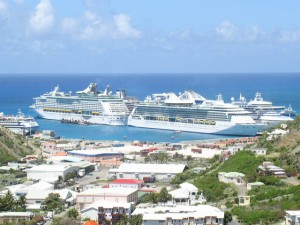
News Americas, LONDON, England, Tues. Sept. 29, 2015: The US Treasury and its Department of Commerce have announced that as of September 21 onwards, US cruise ships carrying ‘authorized travellers between the United States and Cuba only’ and ‘without stops in third countries,’ can provide services under a general license.
The new regulations will also allow ‘the temporary sojourn’ of cruise ships and ferries in Cuba. Put more simply, what this means is — subject to the agreement of the Cuban authorities — that it will be possible for any US citizen or their family to travel from a US port on US‐based cruise ships or ferries to Cuba as long as the traveler attests that they are travelling there for one of the twelve specified reasons that range from educational purposes to business.
It also means that for US visitors, Cuba will remain a discrete market as no other destination can be included on the itinerary.
This dramatic new development occurs as a number of recent reports make clear that cruise ship tourism on vessels, large and small, is set to be one of the fastest growing hospitality sectors in the world.
Recent statistics produced by the analysts Cruise Market Watch, suggest that worldwide, the number of cruise passengers will increase from 22.2m in 2015 to 24m in 2019.
For the Caribbean, which remains the premier cruise destination in the world, this is good news as it suggests that despite the previous relocation of many vessels to the Mediterranean, overall demand for this type of vacation is set to grow significantly.
Moreover, the industry body, the Florida Caribbean Cruise Association, indicates that despite the growth in interest in cruising being global, the Caribbean accounts for more than a third (35.5 percent) of the industry’s global ship deployment capacity. They also report, that responding to demand and the increase passenger numbers, their members are diversifying their product in terms of ship size, the length of cruises available, offering a wider range of alternative destinations and onboard amenities, and developing new shore‐side activities.
What is also clear is that there is a huge untapped supply of new travelers, with different sets of statistics suggesting that when it comes to the region’s core North American market somewhere between 20 per cent and 24 per cent of the whole US population have never taken an ocean cruise.
More significantly perhaps for the regional economy, industry research suggests that around 80 percent of existing cruisers say that it allows them to sample destinations they would like to visit again.
This is despite the fact that cruising has a repeat business rate of 69 per cent according to the US industry body, the Cruise Lines International Association.
While there seems to be no research that details the conversion rate or the destinations chosen, if even 10 per cent of those suggesting they might return as long stay visitors decide to do so, the economic value would be considerable.
In the past, the arguments between those on‐shore and the cruise lines about the value of cruising to Caribbean economies have been well rehearsed: cruise companies play‐off one destination against another to reduce levels of taxation on their visitors; cruise passengers on‐shore spend is low in comparison to stay‐over visitors; the cruise lines are permanently able to undercut the fixed costs, high levels of taxation and other constraints that the land‐based industry faces; and they have little interest in the short‐term impact their transient presence has on destinations.
The amount that the average cruise visitor spends varies, depending on who is providing the statistics and the destination, it would seem to be between about US$116 and US$158 per day compared to the average visitor arriving via air who spends between US$200 to US$250 per day.
The difference is significant given the longer stay of those arriving by air, but the reality is that hundreds of thousands of visitors are gaining their first impressions of the Caribbean from one‐day stops on board cruise ships.
As the global growth figures demonstrate, and the likely rapid development of the Cuban cruise market suggests, the challenge for the region as a whole is now to develop programs such as those in the Dominican Republic that actively try to convert cruise visitors to taking a future vacation on land; and to encourage, as some countries have done, the cruise lines to home port in the Caribbean.








